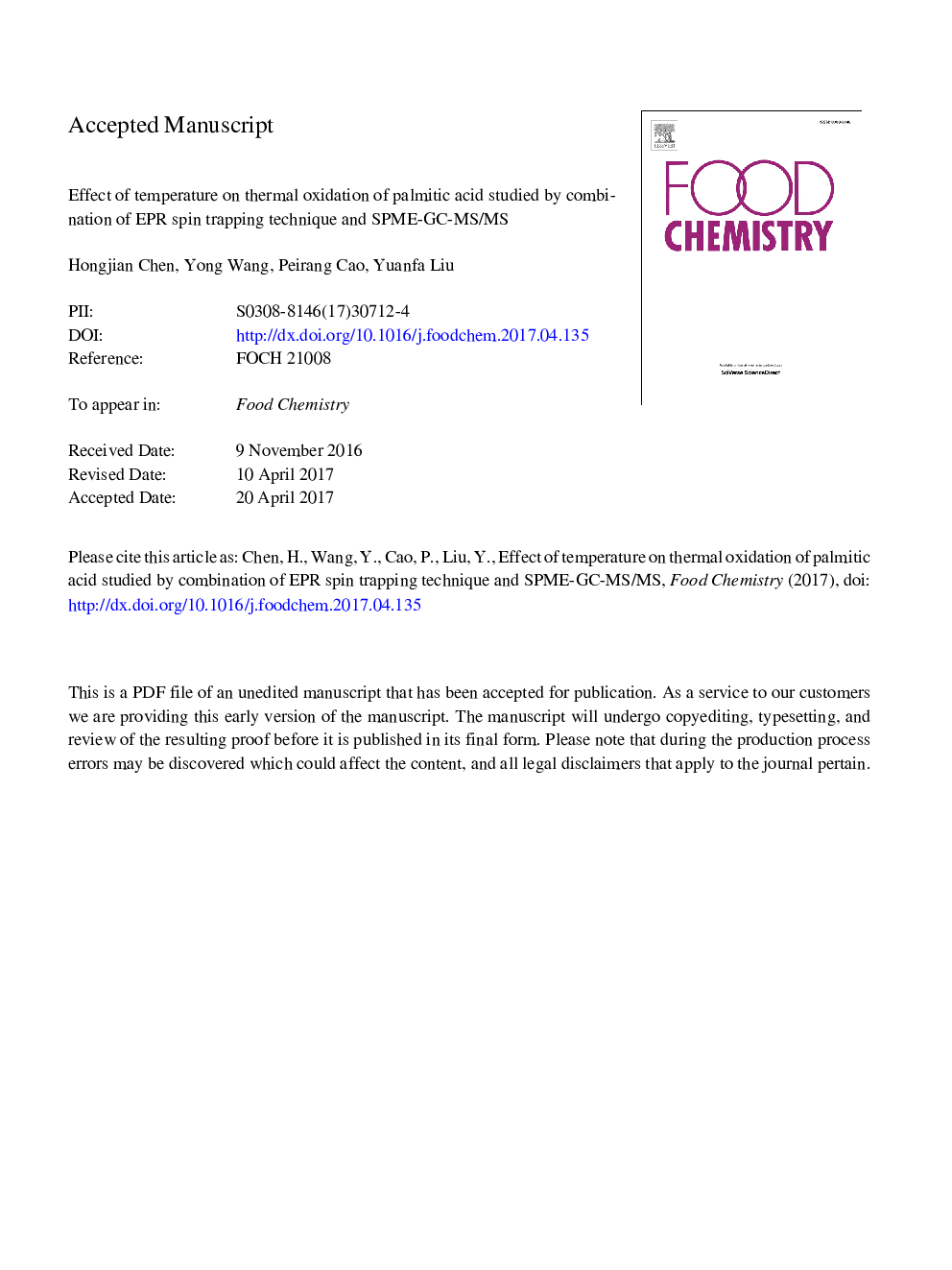| Article ID | Journal | Published Year | Pages | File Type |
|---|---|---|---|---|
| 5133155 | Food Chemistry | 2017 | 22 Pages |
Abstract
Effect of temperatures on thermal oxidation of palmitic acid was studied by the combination of EPR and GC-MS/MS. DMPO was used as the spin trap. The experimental spectrum was simulated with alkyl and alkoxyl spin adducts. Total amount of spins, a parameter to indicate radical concentrations, detected at 180 °C was nearly 10 times higher than that at 175 °C. Besides, total amounts of spins detected at 180 °C decreased rapidly because of the reaction between radical adducts and newly formed radicals. Signal intensities of alkyl radical adducts increased rapidly from 0.405 to 4.785 from 175 °C to 180 °C. Besides, more palmitic acid degraded to oxidized compounds from 175 °C to 180 °C than that of other temperature ranges. The C-C linkages between carbons 2 to 6 were easier to be oxidized at 180 °C. The results all implied that oxidation rates of palmitic acid samples increased rapidly from 175 °C to 180 °C.
Keywords
Related Topics
Physical Sciences and Engineering
Chemistry
Analytical Chemistry
Authors
Hongjian Chen, Yong Wang, Peirang Cao, Yuanfa Liu,
